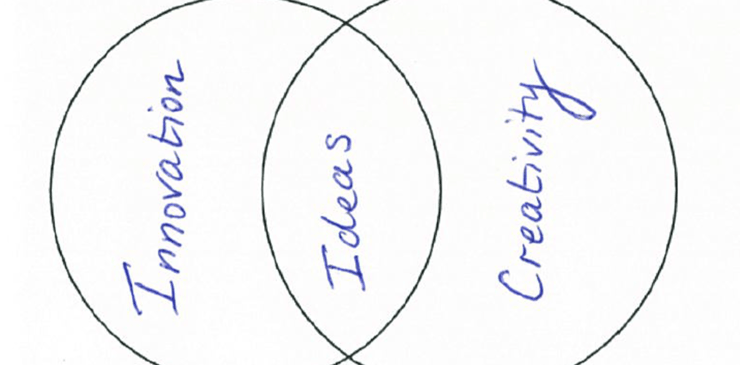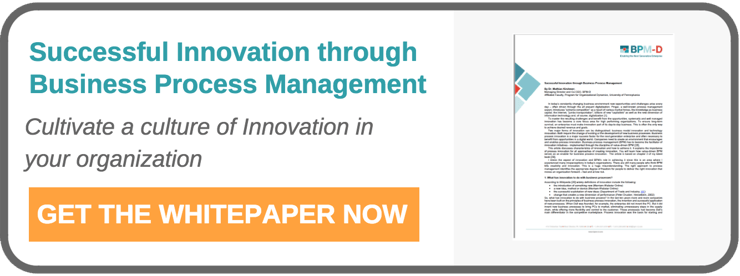











































When Richard Branson told an audience of media, entertainment, food, fashion, retail, and healthcare startups that “small businesses are nimble and bold and can often teach much larger companies a thing or two about innovations that can change entire industries,” this serial entrepreneur knew what he was talking about. It was 2014, and the group was pulled together to “thrash out” inspiring visions for the next three decades of business.
Whether they’re coming up with new products that meet their customers’ needs, joining forces with their competition to gain economies of scale and make significant breakthroughs, or approaching uncharted marketplaces, small to midsized firms are the very cornerstones of innovation in today’s business world. Unfortunately, they don’t always know it. In fact, too many of them assume innovation is only for the big-and-rich organizations that have deep pockets and unlimited resources.
This is a fallacy. In fact, innovation doesn’t have to break the bank nor does it require unlimited human resources to happen. In fact, sometimes it starts with a single employee—a reality that not all organizations fully leverage. With Adobe’s Kickbox program, innovation starts with a shiny red box, $1,000, and everything an individual needs to launch an idea. Working with the innovator, Adobe shows him or her how to come up with the idea, test it with real consumers, and turn it into a new Adobe product.
“We want more disruptive innovation and less planned innovation. To do this, we had to let go,” said Kickbox Founder Mark Randall. “We thought, what if we removed the obstacles that are stopping people from innovating? What if we gave them the resources? There are no rules or constraints. The approach to innovation in Kickbox is giving people the permission to go do it.”
The good news is that you don’t have to come up with a revolutionary invention to be innovative. Many innovations coming out of today’s organizations are just small wins that slowly help the company make incremental moves toward achieving its overall mission. In other words, don’t assume you have to spend millions of dollars and allocate hundreds of hours of manpower to creating the “next best thing” that will knock everyone’s socks off, only to watch that dream take a backseat (much like an overly ambitious New Year’s resolution) as everyone refocuses on their day-to-day responsibilities.
So how can companies break through this inno
vation gridlock and come out winners? The key is to leverage your firm’s “nimble and bold” qualities to always be innovating. And don’t assume you have to come up with the next iPhone, medical miracle, or manufacturing breakthrough to be innovative. A fairly nebulous term defined at its simplest as “the introduction of something new,” innovation assumes different shapes depending on the organization, people, and processes involved.
Clif Bar is a good example of how innovation doesn’t require big-company resources or even a physical location. It does, however, require devoted inventors, a true customer need, and a willingness to put the time and effort into making a product that people will actually like. Starting in their own kitchen back in 1990, the company’s founders began baking their own protein bars because they didn’t like what was on the market at the time. Needing fuel for their long bike rides, they originally marketed their creations to fellow athletes. Fast-forward to 2017 and Clif Bars (and its since-extended product line) graces the shelves of Target, Walmart, and many other mainstream online and offline retailers (not just those targeting athletes).

So how do you do practical innovation regardless of company shape or size? You can kick off the process with this 3-step exercise:
1: Start thinking out of the box.
Start thinking out of the box. Yes, we know you’ve probably heard this one before, but it’s important when you talk about innovation—an area where the words “But we’ve always done it this way and it has worked,” can quickly derail even the most innovative ideas. When you think out of the box you invite new ideas, brainstorming, and collaboration, all of which support innovation. By keeping an open mind and exploring options that you’ve never considered before, you can start the innovation train rolling in the right direction.
2: Come up with your own definition of innovation
Come up with your own definition of innovation. Go beyond “the introduction of something new,” and figure out what innovation really means to your organization.
Is it:
These are just a few ways that you can define innovation, but you get the idea. The important point here is to come up with your own picture of what innovation looks like within your organization and then start taking the necessary steps to put it into action.
3: Putting Innovation into action
Go beyond lip service and put innovation into action. Talking about innovation doesn’t make it happen. Brainstorming new ideas don’t make them come to life. And hashing out the details of a “future” plan doesn’t mean it’s ever going to come to fruition. To create the greatest impact, you need to actually put the innovation into action by addressing these questions:
Innovation isn’t just about coming up with the next, cool product. It has no end point, and it includes everything from how you take your product to market to how you serve your customer to how you come up with effective pricing solutions. All of these activities fall under the broader contexts of innovation and go well beyond the very narrow “cocktail napkin” approach to innovation.
By adopting this mindset, organizations not only become more competitive and customer-friendly, but they can also become more profitable. The latter is a particularly important point in today’s business world, where thinner and thinner margins—and the need to do more with less—are challenging companies to find more innovative ways to generate revenues.
Related Content:
Pretty much every business that’s surviving today – and that will survive for the long haul – will have to be competitive and innovative across all segments of their workflows. From hiring and compensation to selling to market strategy, positioning, and branding; all of these elements are part and parcel of innovation. In fact, as I survey the business landscape right now, I can tell you that all companies that are “surviving” are leveraging innovation in some way – whether they know it or not.
For some companies, of course, the urge to innovate comes quite naturally. A maker of highly-engineered products, for example, is always on the lookout for the next best product introduction and spends much time and money honing its existing offerings. This commitment to continuous innovation can be applied in pretty much any setting. All companies have the same opportunities to innovate, and particularly when they are pushed to do so by forward-thinking personalities, leaders, and/or owners. Those that are succeeding in competitive markets (e.g., those that are commodity-driven, for example, and that have been hit hard by online sellers on both the business-to-consumer and business-to-business segments), tend to follow some basic principles.

BASIC PRINCIPLES OF SUSTAINABLE, PRACTICAL INNOVATION
Tight focus on purpose. In other words, why are you here and what purpose does your company serve? The purpose-driven organization has a much better chance of succeeding than the one that’s just selling something to people. Apple and Google are two good examples of firms that are well known for their innovative and
creative strategies – not all of which are focused on product development.
Willingness to go beyond the basics. Think beyond just creating a product to your intrinsic value proposition, be it to serve your customers better, save the planet, or some other core value. Through this exercise you’ll be able to create an identity and a true purpose that, in turn, dictates your firm’s position in its industry.
Solid value propositions. Having a value proposition in place also helps organizations answer questions like “How am I going to serve my customer?” “How am I going to price my products and services?” and “How can we create a better execution model for success?”
Vision of a profitable model. Companies must also consider their core competencies, and then turn those advantages into capabilities or differentiations that will be used to build out a platform for innovation. You may have a great vision and terrific partners, but if you can’t create a service platform then you’re not going to be able to develop a profitable model.
Nurturing ecosystem. Last but definitely not least, innovation requires a support group that includes suppliers, customers, and other business partners. This is particularly important in today’s business environment, where companies rely on suppliers to deliver quality products; their employees to sell, deliver, and support the products being sold; and their customers to put the products to work out in the field. By continually nurturing that ecosystem, companies can innovate effectively on a regular basis.

This combination of purpose, platform, and ecosystem can be leveraged effectively across all innovation models, and by companies of all shapes and sizes. Build out innovation based on these guiding principles and use it to develop customer-centric innovation that truly differentiates your organization and helps it stand out in the marketplace. You’ll be glad you did.
Copyright (c) 2017 by Faisal Hoque. All rights reserved.
Serial entrepreneur Faisal Hoque is the founder of Shadoka, which enables entrepreneurship, growth, and social impact. He is the author of Everything Connects: How to Transform and Lead in the Age of Creativity, Innovation, and Sustainability (McGraw-Hill) and other books. Use the Everything Connects leadership app for free.
View our schedule of industry leading free to attend virtual conferences. Each a premier gathering of industry thought leaders and experts sharing key solutions to current challenges.
View Schedule of Events-------------------------------------------------------
Search for anything
Insights from the most progressive thought leaders delivered to your inbox.
Insights from the world's foremost thought leaders delivered to your inbox.
Being a hero is all about creating value for others. Please invite up to 5 people in your network to attend this premier virtual conference, and they will receive an invitation to attend.
If it’s easier for you, please enter your email address below, and click the button, and we will send you the invitation email that you can forward to relevant people in your network.
View our schedule of industry leading free to attend virtual conferences. Each a premier gathering of industry thought leaders and experts sharing key solutions to current challenges.
View Schedule of EventsWatch On-Demand Recording - Access all sessions from progressive thought leaders free of charge from our industry leading virtual conferences.
Watch On-Demand Recordings For FreeDelivered by the industry's most progressive thought leaders from the world's top brands. Start learning today!
View All Courses NowThe premier Business Transformation & Operational Excellence Conference. Watch sessions on-demand for free. Use code: BFH1120
Watch On-DemandInsights from the most progressive thought leaders delivered to your inbox.
Insights from the world's foremost thought leaders delivered to your inbox.
Being a hero is all about creating value for others. Please invite up to 5 people in your network to also access our newsletter. They will receive an invitation and an option to subscribe.
If it’s easier for you, please enter your email address below, and click the button, and we will send you the invitation email that you can forward to relevant people in your network.
Courtesy of Nintex Pty's Paul Hsu, below is a transcript of his speaking session on 'Improve employee productivity during and post-COVID by ...
Read this article about HP, Best Achievement in Operational Excellence to deliver Digital Transformation, selected by the independent judging panel, ...
Read this article about BMO Financial Group, one of our finalists, in the category Best Achievement in Operational Excellence to deliver Digital ...
Read this article about Cisco, one of our finalists, in the category Best Achievement of Operational Excellence in Internet, Education, Media & ...









































































































































































































